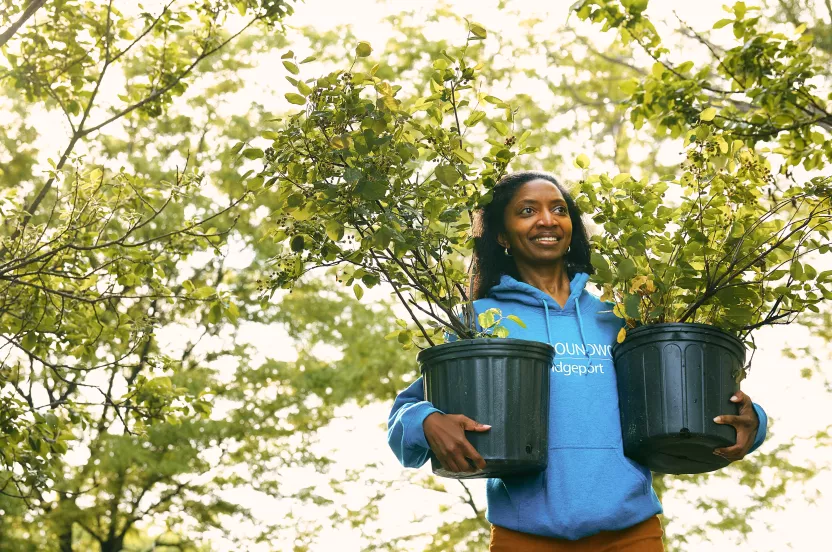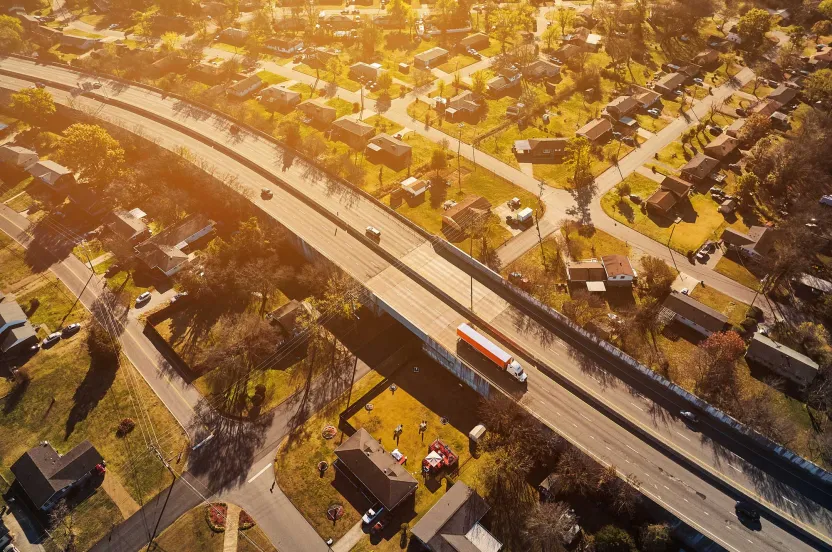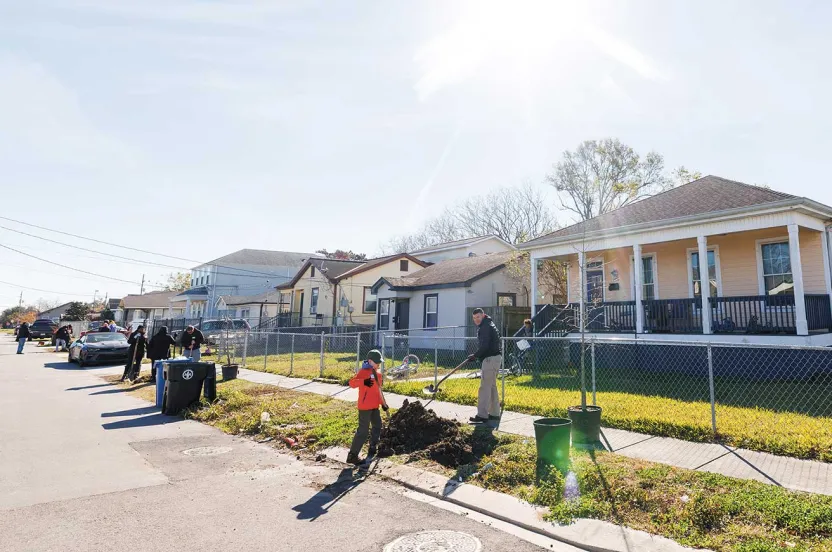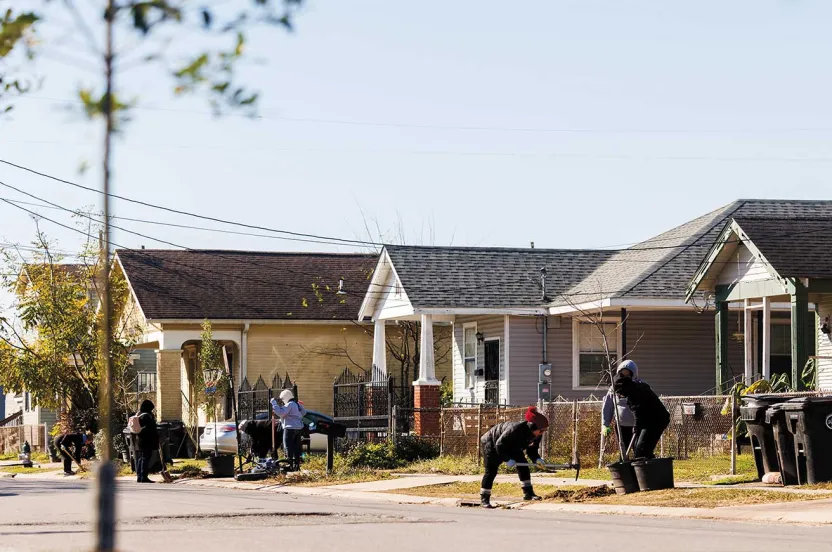Give before midnight on July 31 to double your impact where trees need us most. CHOOSE A PROJECT
Trees and Public Health—a Match Made in Vermont
Climate change is an issue where wins can feel hard to come by, but there’s one partnership that’s being called a “win, win, win.”
April 24, 2025
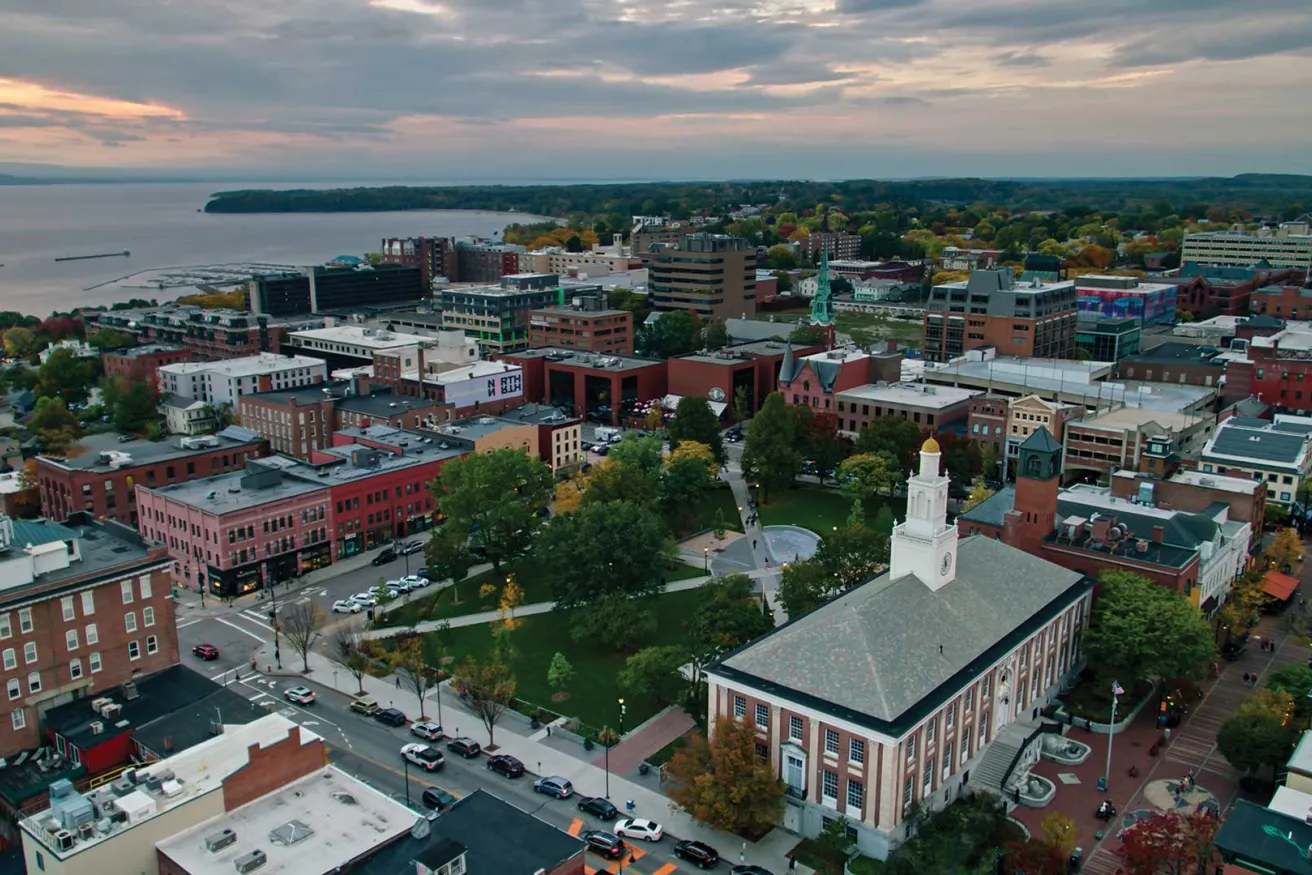
Climate change is an issue where wins can feel hard to come by, but there’s one partnership that’s being called a “win, win, win.”
Public agencies in Vermont are working with the Arbor Day Foundation to get trees to the neighborhoods that can benefit from them the most during summer heat. Planting those trees can help keep residents cool and provide many environmental benefits like sequestering carbon and supporting cleaner air.
The Foundation has worked with the Vermont Urban & Community Forestry Program (VT UCF), a collaboration between the Vermont Department of Forests, Parks & Recreation and UVM Extension since 2017 to get more than 5,000 trees to 15 communities across the state through the Community Canopy program. VT UCF has worked with a variety of partners over the past 8 years to fund and offer the program, one of those being the state’s Department of Health, who utilized public health and heat trend data to demonstrate the need for more of the health benefits that trees provide.
While states like Vermont may not be the first place to come to mind when it comes to rising temperatures, Vermonters may be particularly sensitive to heat for two reasons: many residents are not acclimated to hot temperatures, and homes and businesses in the state are often not designed to handle summer heat.
“In Vermont, we only have several days that are 87 degrees or hotter on average, which is when there are more emergency room calls,” said Gwen Kozlowski, Outreach and Education Coordinator for the Vermont Urban and Community Forestry Program.
“Being able to identify those communities that are most susceptible to heat-related illness is an area on which we wanted to focus our tree planting.”
In Vermont, only 67% of residents use air conditioning of any kind and only 7% of homes have central air, which leaves residents without the most effective way to stay safe during heat waves.
Jared Ulmer, Climate and Health Program Manager at the Vermont Department of Health, said even Vermont’s smaller urban areas can become heat islands due to more dense populations and less tree cover.
“In cold climates like ours, most heat-related deaths in cold climates like Vermont tend to happen at home,” Ulmer said.
Without being able to make air conditioning more accessible, part of the Department of Health’s efforts to adapt to rising temperatures is to educate residents on staying safe, checking on vulnerable neighbors in their homes, and supporting mitigation efforts such as tree planting for cooling benefits.
Zooming in
By partnering with the Arbor Day Foundation, VT UCF staff have been able to narrow down specific geographic areas within a city where property owners would be eligible to receive trees for free. This has included focusing on downtowns with accessible public spaces and high density residential areas where the entire community could benefit from more shade provided by trees.
VT UCF staff have utilized state datasets and tools to identify priority areas. One such tool is the Heat Vulnerability Index, developed by the Vermont Department of Health. The index juxtaposes measures of population, demographics such as age, reported health conditions, and previous rates of emergency room visits on high heat days.
“What’s really unique about Vermont is the strategic angle they’ve taken with the evaluation of health and choosing those communities,” said Kristen Bousquet, senior manager of corporate partnerships at the Arbor Day Foundation.
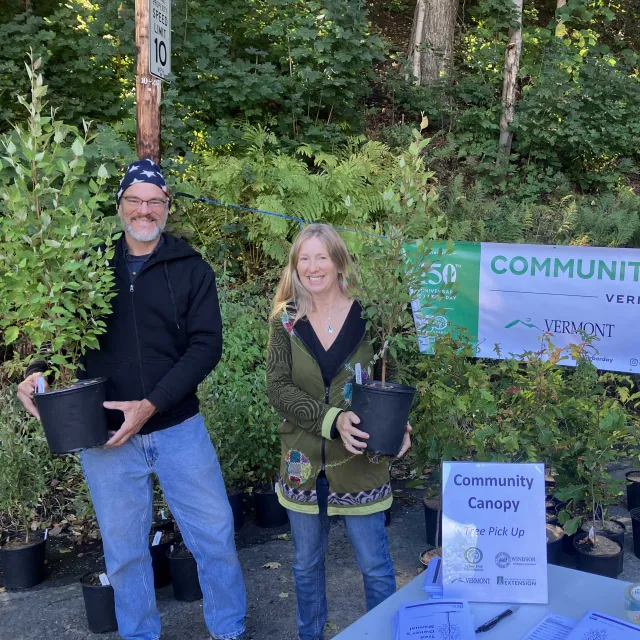
Bousquet said the tree distribution tool helps partners set those specific boundaries of who can receive trees, rather than opening the program up to an entire state or city. And the tool provides information to help residents select a tree species and guides them where to plant it on their property, to maximize the benefits of the tree.
Kozlowski with VT UCF works with local partners in each selected community to conduct outreach to residents to let them know they are eligible for free trees and to inform them of the benefits of planting a tree on their property. She has worked with schools and a variety of nonprofit organizations, placed fliers in food pantries, hosted tables at farmer’s markets and block parties, and has even gone door to door to get the word out about the program.
Her goal is to benefit people who wouldn’t have been able to buy or plant a tree themselves.
“Some of the comments that we've seen in our evaluations are, ‘I'm a first-time homebuyer and I haven't been able to purchase trees, and these are really going to make a difference for me,’” Kozlowski said. “And that just makes my heart soar because that is exactly the person we want to reach.”
Vermont has distributed more than 5,000 trees to more than 3,000 homeowners since 2017, which benefit not only the residents who planted the tree, but the neighborhood and beyond, too.
The Big Picture
The intentionality of this partnership aligns with larger goals on a global scale of the Foundation.
The Arbor Day Foundation has set a goal to plant 500 million trees by 2027. But it’s not about planting trees just to plant trees. The goal is to get those trees to the neighborhoods and individuals who could benefit from them the most.
Vermont’s approach is a perfect example of how that can work. So far, the Foundation has used its tree distribution technology to distribute more than 620,000 trees with an estimated $290 million in energy savings and other community benefits.
“We really love to be able to support anything that helps adapt to climate impacts on health, you know, supports health through other means, like the air quality benefits and mental health benefits of trees, and then there's sequestering carbon all at the same time,” Ulmer said.
“So yeah, such a win, win, win program. And people love trees, especially when they're free.”
